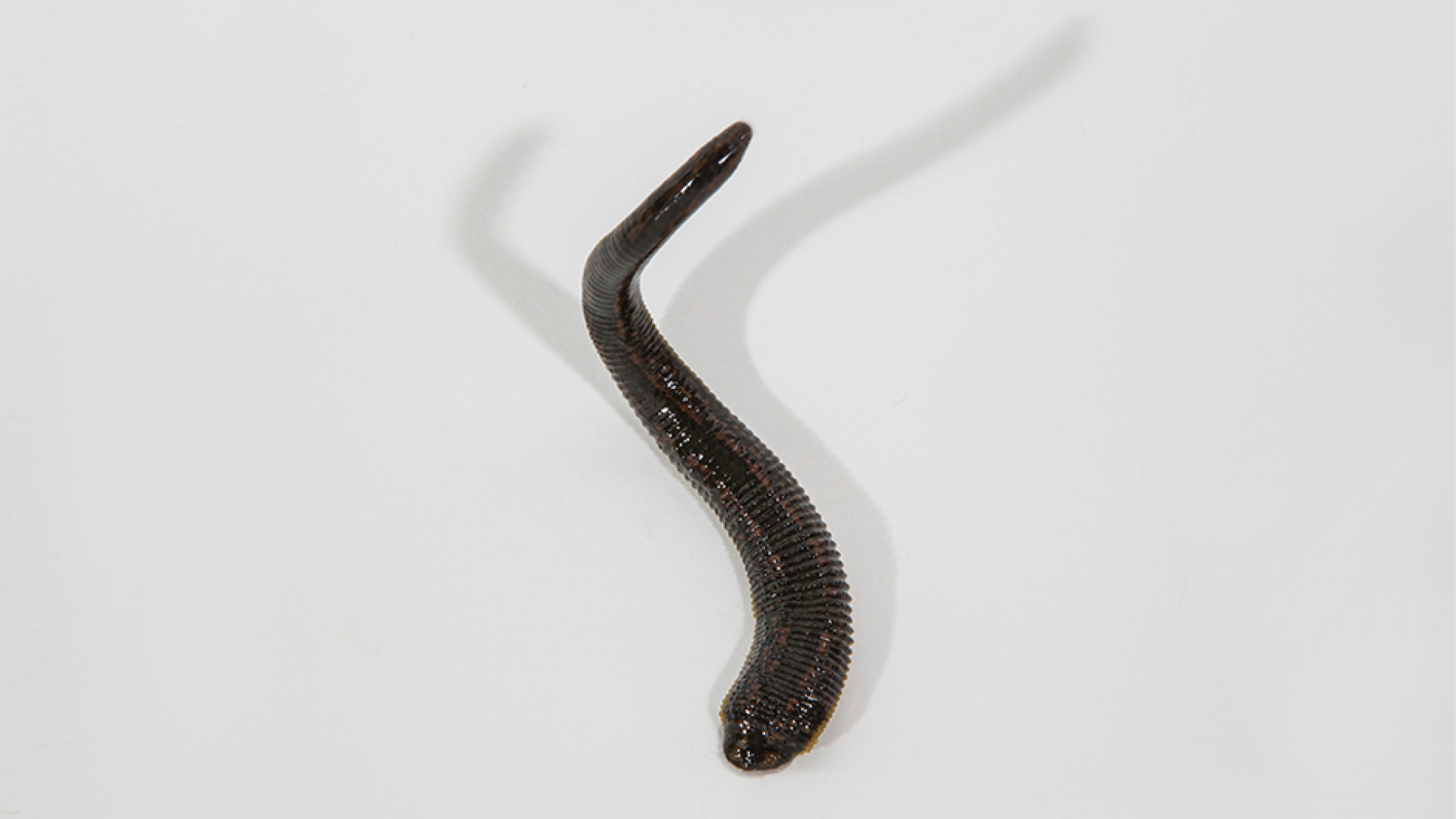Sebastian Kvist on how new study offers insights into the powerful anticoagulants present in leech saliva
Sebastian Kvist, Curator of Invertebrates at the ROM, and an international team of researchers recently published results on genome sequencing the Hirudo medicinalis, a European leech used in the treatment of medical conditions today. Led by Kvist, the team focused on the diversity of blood thinners (anticoagulants) contained within the genome and the results of the study were published this summer in Scientific Reports.
Kvist addresses how this study provides insight into the evolution of bloodfeeding and how it will allow medical professionals to better understand the use of leeches in their practice.
How commonly are the Hirudo medicinalis leeches used in medicine today? Have they always been popular or was there a surge in their use?
The European medicinal leech is commonly used to decongest veins after build-up of blood following skin grafting or digit replantation. Beyond this, some of their blood thinners are created synthetically and administered to patients at risk of stroke or other blood clotting diseases.
Their frequency of use can be difficult to estimate, but North America in general, and the US in particular, are at the forefront of hirudotherapy, or the use of leeches in medicine.
This species was incredibly frequently used in medieval Europe, where it was used to treat a variety of conditions that, at the time, where thought to be caused by an imbalance of bodily fluids. As science-based medicine replaced humeral theory, in combination with past over-harvesting of leeches (which led to their scarcity), leeches fell out of favour. Since the beginning of the 20th century, however, we have seen a rise in the use of leeches in modern hospital settings—I think that it is safe to say that we are currently seeing a surge in their use.
Does the saliva and its efficacy in thinning blood vary from one leech species to another?
Although this is an incredibly complex question, the simple answer is yes. Our lab at the ROM focuses on trying to understand the repertoire of blood thinners in different species of leeches and our initial results suggest that different species produce different blood thinners, with very different efficacy in thinning human blood. We are exploring the reasons underlying these differences, whether it be a difference in the choice of hosts by the leeches or simply that some proteins evolved much later in the history of leeches.
How is bloodfeeding in leeches different from say mosquitos or horse flies?
Bloodfeeding seems to have evolved independently dozens of times throughout the history of our planet. The independency means that there is no single ancestor to all blood feeding animals but, rather, that several blood feeding organisms have evolved their own set of characteristics that allow them to feed on blood.
What is common in blood feeders is that they all need to find the host, get to the blood and keep the blood flowing during feeding. This is equally true for vampiric birds, bats, insects and leeches. However, the ways in which these actions are realized differ greatly between species.
Some leeches possess jaws and teeth to “bite” their prey whereas others possess an eversible straw-like structure (proboscis), much like a mosquito. The mouth parts of horse flies are highly modified and don’t resemble those of leeches at all.
Beyond this, the blood thinners in the saliva look very different between these species, but some of them have much the same effect. It is important to note that some leeches possess over 20 different blood thinners in their saliva, but several of these act on the same targets in the human body.
Genome sequencing is poised to inform us about all the blood thinners in an organism as opposed to only those that are specifically targeted.
“ ”What can genome sequencing tell us about the evolution of bloodfeeding in leeches?
Genome sequencing is, in many ways, the final frontier of DNA sequencing because it is meant to capture the entirety of the genetic makeup of the organism. Because of this holistic approach, genome sequencing is poised to inform us about all the blood thinners in an organism, as opposed to only those that are specifically targeted, which was the result of previous methods. Because of this, we are approaching a system where we are able to say not only which blood thinners that are present, but also which are absent.
This matters greatly to the evolution of blood feeding because the absence of a protein can mean that it has not evolved within a certain lineage of leeches. In addition, genomic sequencing allows us to find specific regions of the genome that are common to all species of leeches and this will ultimately allow for more data-rich analyses to decipher the evolutionary tree, or Tree of Life, for leeches.


